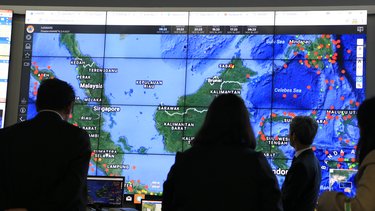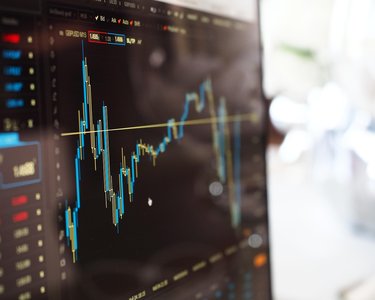A newsletter on Responsible AI and Emerging Tech for Humanitarians
When disaster strikes, every minute counts. Whether it is a cyclone forming off a coast, a drought creeping across farmland, or rising rivers threatening to overflow, the ability to warn people in time can mean the difference between safety and loss. Early warning systems have long been at the heart of disaster risk reduction, helping communities act before a crisis becomes a catastrophe.
Today, artificial intelligence is reshaping what is possible. From satellite-fed flood forecasts to machine learning models that read signals buried in news reports to anticipate food insecurity, AI is making early warnings faster than ever. These tools are helping governments and humanitarian organisations act pre-emptively and support communities to mitigate the impact of a disaster.
But at the same time, the speed and scale that make AI so powerful also bring risks. If deployed unevenly, AI could deepen digital divides. Poorly tested algorithms might overlook local realities, amplify bias, or issue alerts that confuse rather than prepare. As the Pacific Disaster Center’s Executive Director Ray Shirkhodai reminds us, ‘AI can suggest - but it must never decide.’ The challenge now is ensuring that these intelligent systems strengthen, rather than replace, the human judgment, ethics, and trust that early warning depends on.
This month’s Humanitarian AI Unpacked explores how humanitarians are using AI to sharpen early warning systems, the lessons emerging from real-world deployments, and what it will take to keep the “human” in humanitarian technology.
Summit Spotlight: NetHope Global Summit 2025
If you haven’t yet secured your tickets and travels to the NetHope Global Summit, you should do so ASAP. Starting on Monday, 27 October, NetHope is convening its 2025 Global Summit in Amsterdam (virtual option on the 31 October which is free for all non-profits). The summit will bring together non-profit technologists, humanitarian leaders, and funders around shared challenges. AI will take center stage as humanitarian and non-profit leaders explore how emerging technologies can be adopted responsibly.
From Forecasting for Humanity, where Twilio and the Norwegian Refugee Council will highlight AI-powered crisis prediction and communication systems, to Building Trust in AI, which will showcase how AWS, Data Friendly Space, and NRC are accelerating response times with human-in-the-loop verification, AI will be discussed as both a force for good and a governance challenge.
Sessions like Digital Skills for Mission Alignment (WWF & Microsoft) and Technology and AI: Navigating Innovation with Purpose and Integrity (Oxfam, Trócaire, Box & NetHope) will tackle the ethical dimension and explore how organisations can align AI use with humanitarian values and ensure equity in deployment. Meanwhile, Beyond the Pilot (Save the Children, the Salvation Army & Microsoft) will focus on scaling responsible AI initiatives in tough operational contexts and approaches that can help nonprofits leverage technology to enhance their impact.
Together, these sessions underscore NetHope’s role in helping the humanitarian sector harness AI and digital innovation responsibly and ensuring that technology amplifies, not replaces the humanitarian principles at the heart of our work.

Case Study
DisasterAWARE, an early warning platform
Pacific Disaster Center (PDC)
Early warning systems that enable preparedness for disaster are an important part of managing the risk of disasters, saving lives and minimising the impact on people’s lives.
The PDC has developed a platform called DistaserAWARE that provides real time alerting for 28 natural, biomedical and geopolitical hazards. In addition to the hazard alerts, DisasterAWARE provides tools that help the general public as well as disaster management organisations to prepare, assess the potential impact, and plan their response.
The platform is based on AI for Humanity, a machine learning algorithm, which enables much faster processing of huge amounts of hazard monitoring data and is also capable of recognising patterns, creating new data and providing additional insights. Relevant information is extracted and made available through DisasterAWARE, thereby enhancing the coverage of hazards and related information around the world
Currently the team is testing an LLM-powered “expert system” that can support disaster management professionals by pulling together relevant information and providing recommendations that help them to navigate the many different sources of information and layers of data that are available to them.
Generative AI also has the potential to develop communications for the public, informing them of any hazards that may impact them and to allow them to prepare. The PDC is working on an idea of a "pocket expert” that would not only alert both disaster management professionals and the public to any hazards but also provide them with advice on what actions to take. This could be one of the most impactful uses of AI in the realm of disaster awareness.
While the PDC is excited about the potential of generative AI, Ray Shirkhodai, the Executive Director, is also clear that its application needs to be handled with caution, and in line with humanitarian principles. To him, it is essential that while AI may make suggestions, it must be the human that ultimately takes the decision.
📎 Get in touch: media@pdc.org
Who’s Doing What
Other examples of AI tools being used across the humanitarian sector.
UNDRR – Early Warnings for All (EW4All)
The UN Office for Disaster Risk Reduction (UNDRR), under the Early Warnings for All initiative, is developing AI-integrated global early warning systems, by piloting machine-learning models that fuse satellite, radar, social-media and IoT data to sharpen hazard forecasts and send population-specific alerts in near real time, bridging the digital divid
📎 Contact: UNDRR-Europe@un.org
Google in collaboration with IRC et al – The Flood Hub
The Flood Hub provides users with locally relevant flood data and forecasts up to 7 days in advance so they can take timely action, using a combination of two AI models that process two publicly available data sources.
📎 Contact: Help
Catholic Relief Services - Market Monitoring Dashboards
Catholic Relief Services built a real-time Market Monitoring Dashboard using Power BI and machine learning to aggregate global and local price, inflation, and commodity data (from sources like FEWS NET, World Bank, WFP) plus country programme inputs. It forecasts prices 6–12 months ahead which helps tailor cash & voucher assistance, justifies programme budgets to donors, and enables rapid adaptation to market changes.
📎 Contact: here
Editor’s Choice
Curated reads and resources our team found especially insightful this month.
📖 5 Ways AI Can Strengthen Early Warning Systems, UNU-EHS (2024) Highlights how AI enhances hazard detection, modeling, forecasting and communication of early warnings and offers insights for ensuring AI provides fair and ethical early warnings.
📖 Reading Between the Lines: Leveraging News Data for AI-Powered Food Insecurity Forecasts, UNDRR/ PreventionWeb (2025) Introduces a cutting-edge method using natural language processing on news reporting to predict food crises up to 12 months ahead at local levels which offers humanitarian actors earlier signals for anticipatory funding and intervention.
📺 How AI helps to predict extreme weather events, BBC, (2024) In this episode of the video series, Artificial intelligence decoded, the BBC explores how AI powered digital twins of our earth help understand, predict and plan for changes in the climate.
📖 What Is an Artificial Intelligence Crisis and What Does It Mean to Prepare for One?, The Future Society (2025) Explores the flipside of humanitarian innovation, when AI systems themselves become the “AI crisis” due to gaps in anticipation and detection. It therefore calls for stronger governance, early-warning mechanisms, and global coordination to manage AI-driven emergencies.
Skill Up
Short, practical learning picks for practitioners - no tech background needed.
NetHope’s Fundamentals of AI for Nonprofits, (2h, free, online) targeted at busy humanitarian professionals this course enables an understanding of basic AI concepts, how to evaluate their relevance, and practical applications that enhance decision-making and operational efficiency. The course also examines ethical considerations, regulatory frameworks, and governance structures essential for responsible AI adoption ensuring AI solutions that protect privacy, avoid bias, and remain accountable.
Stanmore School of Business: The Professional Certificate Course in AI in Humanitarian Aid (paid, online) equips professionals with skills to leverage artificial intelligence for impactful humanitarian efforts. Designed for aid workers, this course focuses on AI-driven solutions for disaster response, resource optimisation, and crisis management.
IFRC’s Data Playbook v1 (free, toolkit) - As we think about preparing for the data foundations of AI, this hands-on guide can help humanitarian teams build data literacy, strengthen decision-making, and apply responsible data practices across preparedness, response, and recovery operations.
Podcast Spotlight
Voices from the sector on emerging tech deployment in humanitarian response.
A New Ethical AI Adoption Toolkit for Humanitarian Actors
In this episode of Humanitarian AI Today, host Brent Phillips sits down with Tigmanshu Bhatnagar, a lecturer at University College London (UCL), and Hamdan Albishi, a UCL MSc student in AI for Sustainable Development.
The conversation dives into a newly developed practical guide designed to help humanitarian organisations ethically adopt AI. They talk about key principles, deployment pitfalls, and practical steps to ensure AI supports, rather than undermines, human dignity in crisis settings.
🕐 Run time: ~30 min
Upcoming Opportunities
Stay ahead of funding calls and events.
📅 2025 NetHope Global Summit
When: 27-29 October in Amsterdam, and virtually on 31 October
NetHope Global Summit will provide an intimate and solution-driven space for strategic dialogue. With a focus on real-world expertise and cross-sector collaboration, the Summit will create opportunities to share insights, build partnerships, and align on the challenges and opportunities ahead.
📎 More info
📅 AI for Good – Grounding foundation models for automated climate science
When: 17 November 2025,17:00 - 18:00 CET (online)
This talk explains how adding real scientific rules to AI models can make them more accurate for studying climate change and shows how new AI “climate co-scientists” can help simulate and understand our planet better.
📎 More info
💰 European Commission - Improving disaster risk management and governance
Deadline: 12 November 2025
Support inclusive, innovative risk governance and resilient emergency systems so that authorities, communities, and disaster-response actors can prepare, respond, recover, and learn from crises more effectively. Total budget is €10.5M.
🔗 More info
Adam Fysh, Coordinator of the Global Risk Analysis and Reporting Section at UNDRRNot all tools are going to work for the entirety of disaster risk reduction, this is about helping people find actionable insights and solutions.
Disclaimer: The views expressed in the articles featured in this newsletter are solely those of the individual authors and do not reflect the official stance of the editorial team, any affiliated organisations or donors.
